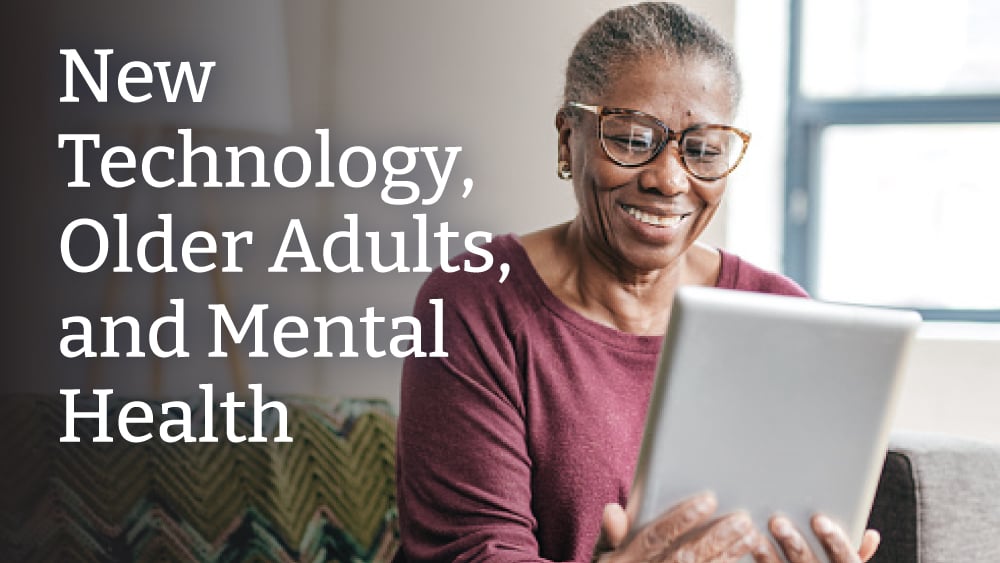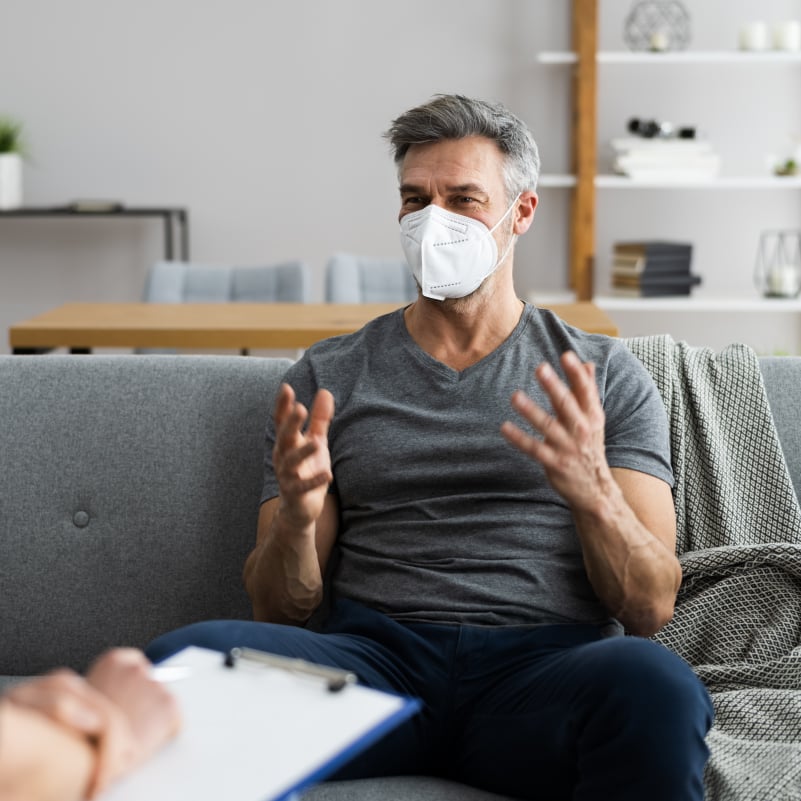The public conversation surrounding new technology often centers around the effects it might have on children and young adults. When it comes to adults ages 65 and older, discussing the effects technology might have on them is also important.
We asked Johnathan Wright, an doctoral psychology intern with Rochester Regional Health Behavioral Health, for analysis and recommendations when it comes to the role new technologies can take in the lives of older adults.
Mental health in older adults
It may come as somewhat of a surprise, but the two most significant areas of concern for mental health in older adults (ages 65+) are not related to dementia, as some may suspect. Approximately five percent of U.S. adults ages 71-79 are diagnosed with dementia.
More commonly, depression and anxiety are part of everyday life for millions of senior citizens. According to the American Psychological Association (APA), approximately 20 percent of adults over the age of 65 experience depression. As the age demographics go up, the rate of adults living with depression increase as well.
As many as 45 percent of adults ages 85 and up are depressed. This can include a spectrum of depressive disorders, including:
- Major depressive disorder
- Persistent depressive disorder
- Substance use depressive disorder
- Depressive disorder due to medical condition(s)
Living with depression can be a health risk, as it can worsen complications associated with older living, such as heart disease, diabetes, or stroke.
“If you feel less inclined to do physical activity or be out and about, you will be at a higher risk for cardiovascular concerns, which can lead to feelings of depression,” Wright said. “So it can become a cycle.”
The APA estimates that roughly 10-20 percent of older adults are dealing with anxiety.
New technologies
There are always new types of software, gadgets, and programs coming out that are designed specifically for the older adult population or are adopted by those older adults at higher rates than were expected.
Scientists are studying these technologies that are becoming more popular – and are seeing how they affect the mental health of older adults. Generally, scientists are seeing improved services being offered to users. Studies suggest most older adults enjoy the benefits of “improving overall mental health and connection to others,” according to Wright.
Some of the communication-related technologies that have proven popular with senior citizens in the last ten years include:
- Voice-activated technology (i.e., Siri, Dragon)
- Bluetooth
- Zoom
- Doxy
- Skype
- FaceTime
Plenty of apps and software are available to help improve mental health in older adults. Some are designed to assist with specific tasks, while others encourage mental stimulation. These include:
- Medicine reminder apps
- Daily planning apps
- Scheduling apps
- Calendar apps
- Larger smartphone or tablet keyboards
- Crossword puzzles
- Brain teasers
- Word searches
The importance of remaining social, interconnected, and encouraging regular interaction also allows social media apps and platforms such as Facebook and Snapchat to flourish.
“Isolation can be detrimental, so encouraging that social connection and regular communication is important,” Wright said. “Even though social media aren’t mental health apps, it is important to stimulate regular use of communication skills.”
For the medical community, these software programs and apps create significant amounts of data that can be used by researchers. That data can be analyzed to show how apps are being used, by whom, and how often so they can be used more effectively in the medical community in the future.
Positive effects
There is an increased demand for mental health treatment and care in aging Americans. In 2019, 16.5 percent of all people living in the U.S. were ages 65 and older. That number will continue to grow.
As we continue to innovate and expand the way technology is used in everyday life, that technology helps us meet the demand for mental health treatment and care created by the older adult population.
Remote health services are helpful for older adults who have reduced access to healthcare or reduced transportation. Telehealth appointments and chatting with friends or even healthcare providers over software or apps can be helpful for maintaining communication and connection.
In addition, using these technologies can lessen stress for people who have anxiety and might have trouble with in-person activities or events.
Negative effects
When considering the new apps and software being used by older adults, Wright suggests it isn’t the technology itself that is bad. It all depends on how it is used.
One obstacle can be simply accessing the Internet consistently. Approximately 22 million older American adults lack broadband Internet access, according to a report from Older Adults Technology Services (OATS). Without that service in place, much – if not all – of the emerging technology being discussed cannot be used.
With some older adults, there can be a lack of readiness to engage with technology. Some may also not have the prior knowledge about technology and are less willing to commit to learning new things.
It is important to keep in mind that virtual communication and video chatting can be a barrier with some individuals. There is a way of communicating in-person with spoken language, body language, eye contact, and tone that cannot be duplicated exactly in an environment that relies on cameras and microphones. These losses can lessen the overall experience of social interaction for some older adults, especially with friendships that have been in-person for decades.
There is also an increased responsibility on the part of providers to use these technologies to maintain and enhance the use of technology for their patients and clients. Being able to continually teach older adults about these new things is a very valuable skill.
General guidelines
Given the positive and negative attributes of new and emerging technology, you may wonder if there is a general recommendation on which is best for older adults: in-person or tech-oriented programs.
As is the case with most new technologies, remember that one size does not fit all. Keep in mind that a person’s individual preferences should be considered when deciding whether or not to integrate technologies into their treatment.
An important point to keep in mind: Maintaining a regular routine can stimulate older adults, so emphasizing interactions through video calls and social platforms can be helpful and beneficial for some individuals.
“Our interactions are less frequently in person and may feel less personable to someone who grew up in a mostly in-person lifestyle,” Wright said. “So this calls for action for all of the providers, to make those connections more meaningful – in both physical and mental health.”
Providers and loved ones are encouraged to use new technology not as a way to replace an older adult’s care, but to enhance it with the resources you’ve been given.









